SVTPerformance 2012 GT : K&N Replacement Filter Testwww.svtperformance.com/forums/front...ance-2012-gt-k-n-replacement-filter-test.htmlwww.svtperformance.com/forums/front...ance-2012-gt-k-n-replacement-filter-test.htmlwww.svtperformance.com/forums/front...ance-2012-gt-k-n-replacement-filter-test.htmlwww.svtperformance.com/forums/front...ance-2012-gt-k-n-replacement-filter-test.html
www.svtperformance.com/forums/front...ance-2012-gt-k-n-replacement-filter-test.htmlSometimes an interesting idea for an article just simply presents itself. Such was the case here. A mod that we have for the SVTP 2012 Yellow Blaze Mustang GT just so happened to arrive with a K&N Drop-In Replacement Filter for the stock airbox. Since it has long been thought that a high-flow replacement filter is worth a couple of horsepower of the factory paper unit, and circumstances found us in the vicinity of Arrington Performance's Superflow chassis dyno (our favorite dyno facility to use for testing), we decided to do a little back-to-back testing. Follow along for the results:
I think this car is starting to get pretty comfortable on this dyno.
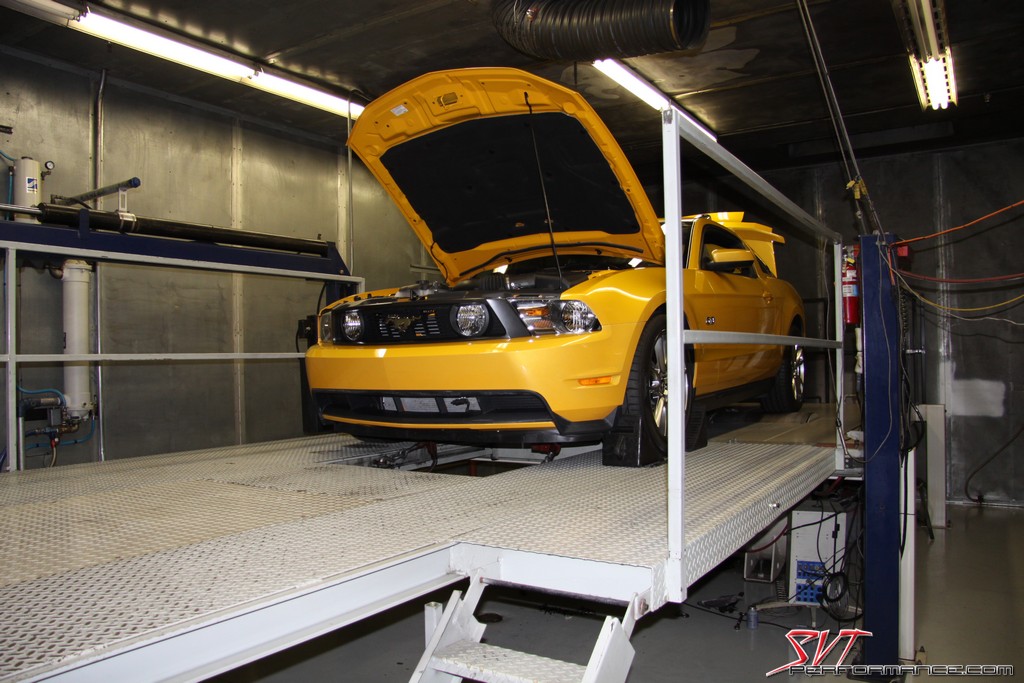
The SVTP has sadly been returned to stock, but not for long.
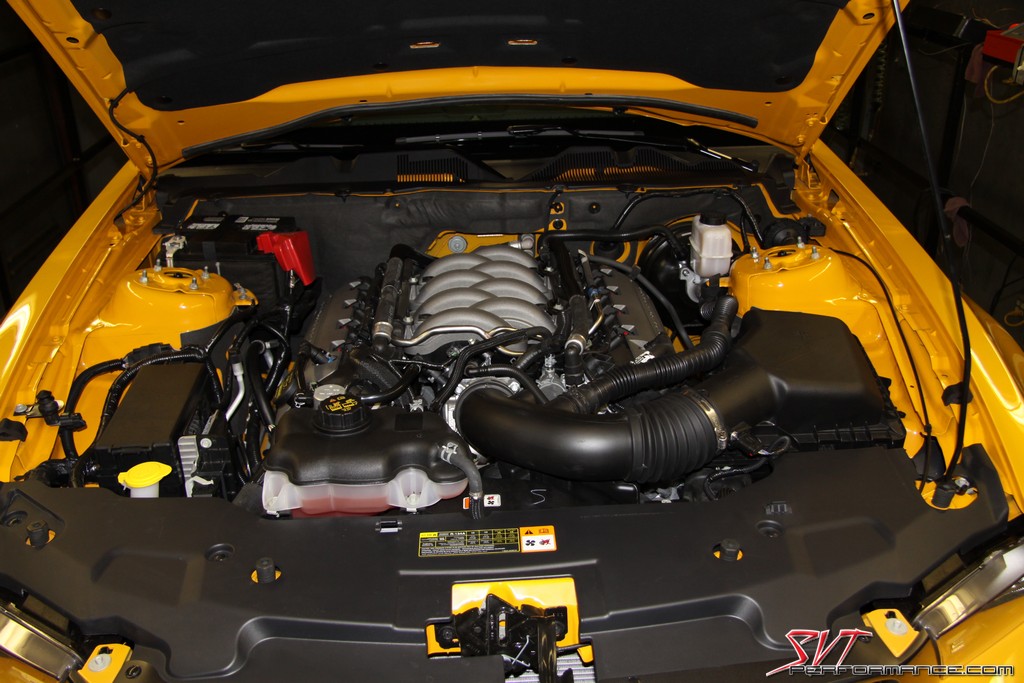
The subject of today's test. It appears to be endorsed by Ford Racing.
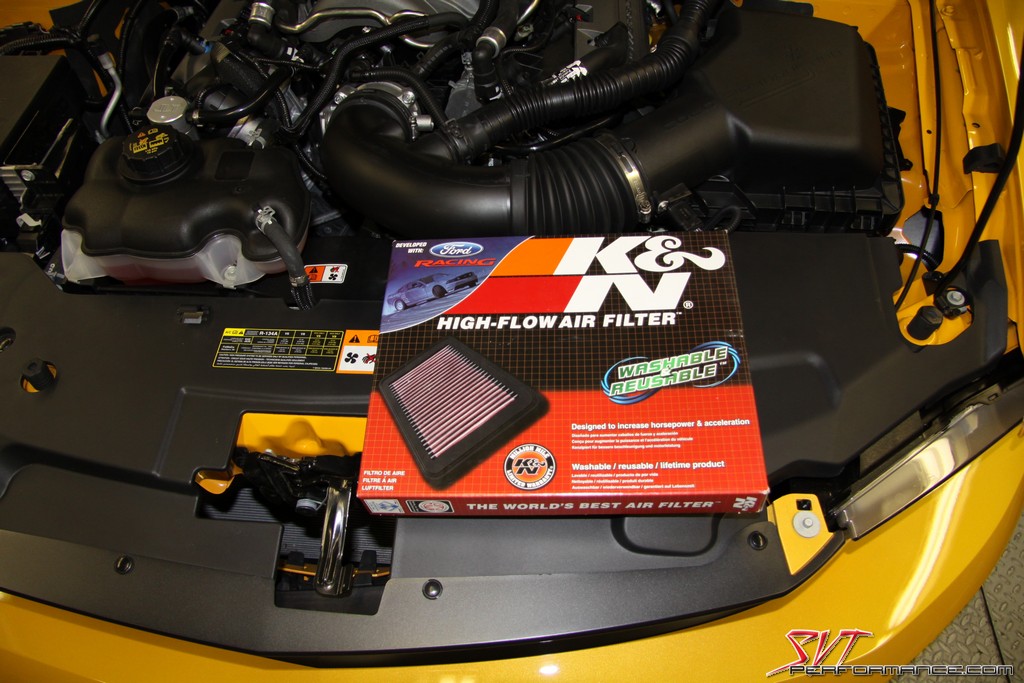
The part number for those who may be interested.
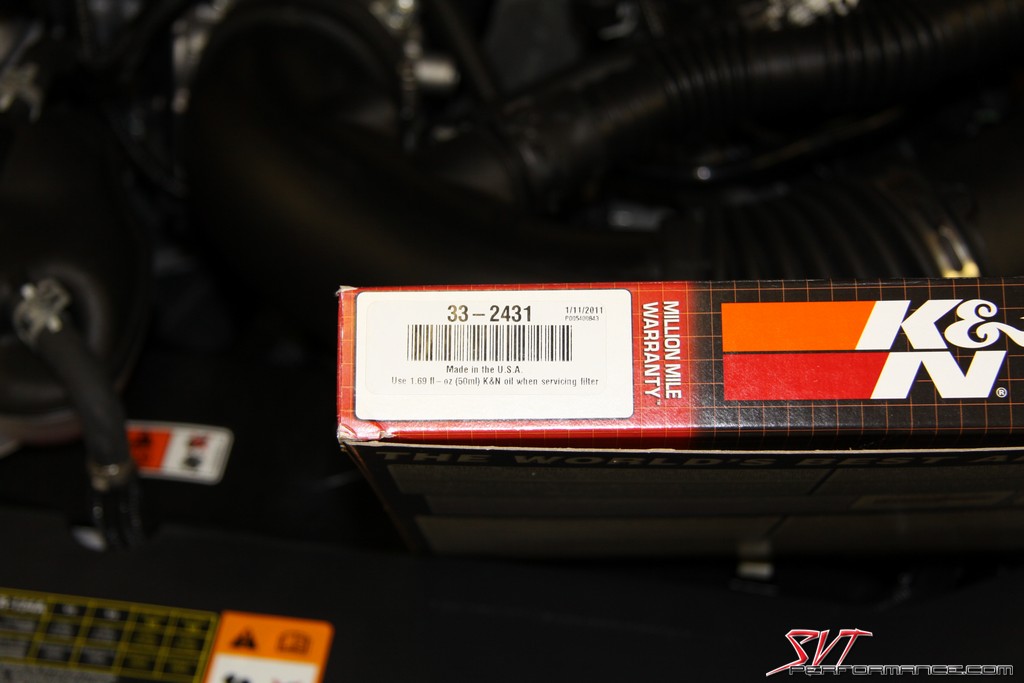
As it comes out of the box.
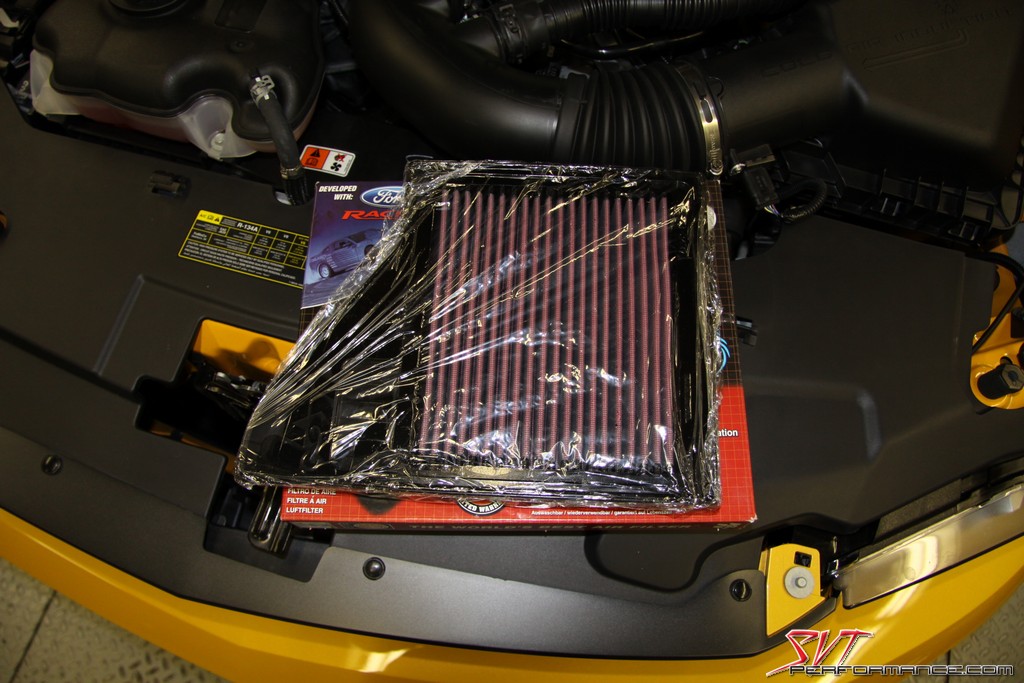
The heavy rubber construction of the K&N is far more robust than the stock filter's foam rubber.
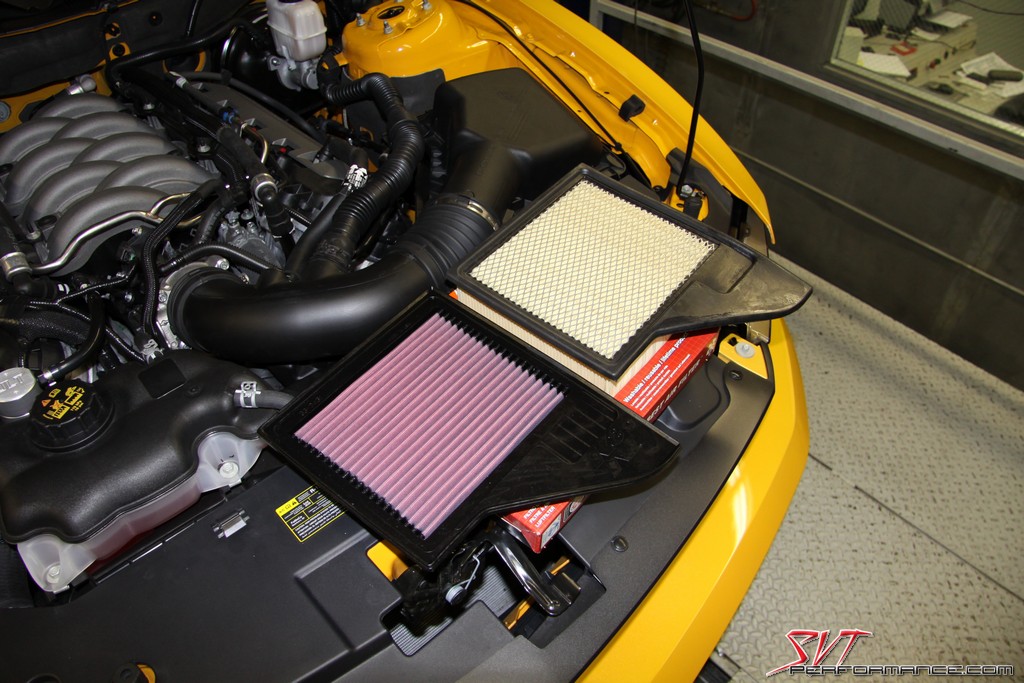
The deeper pleats of the stock filter would appear to allow it to hold a greater volume of dirt before needing to be replaced/cleaned.
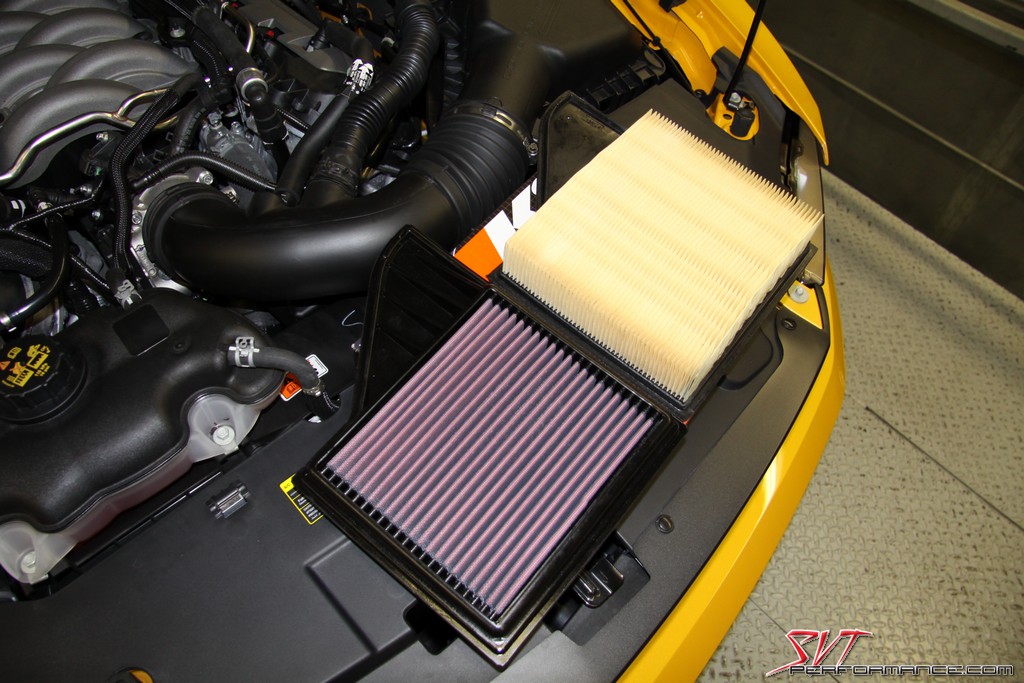
Here you can see the physical height difference of the two filters.
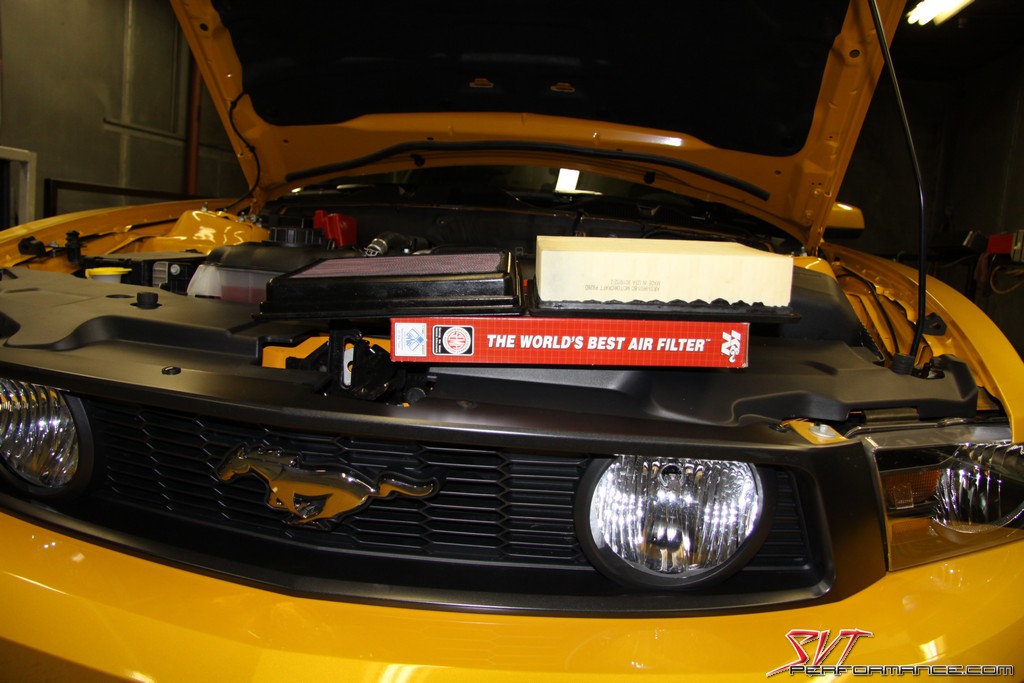
Fitment of the stock filter.
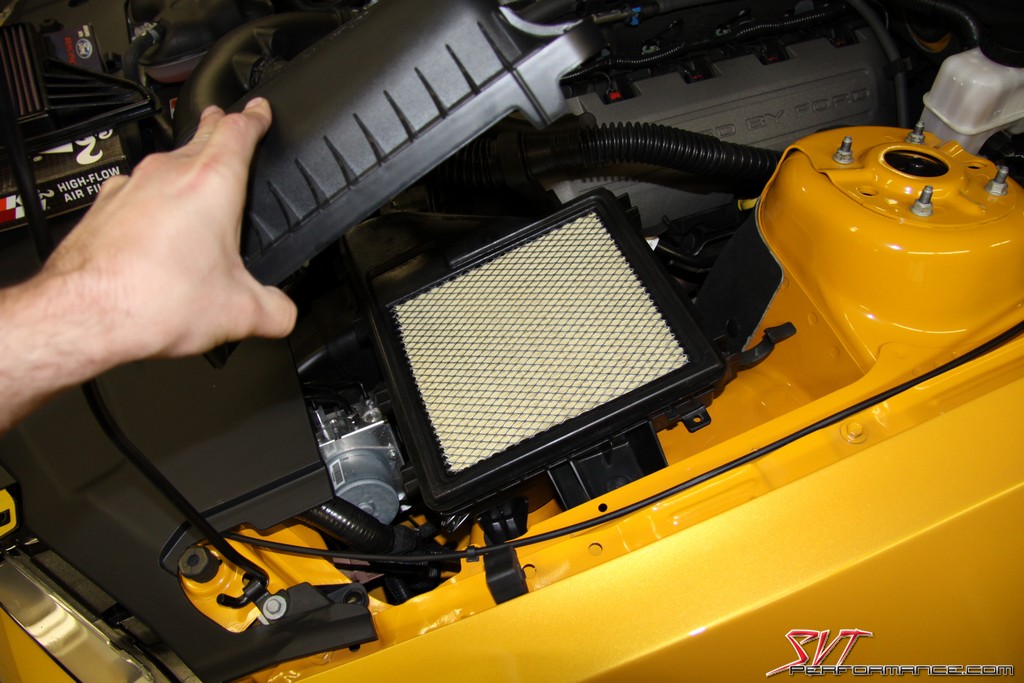
Fitment of the K&N filter.
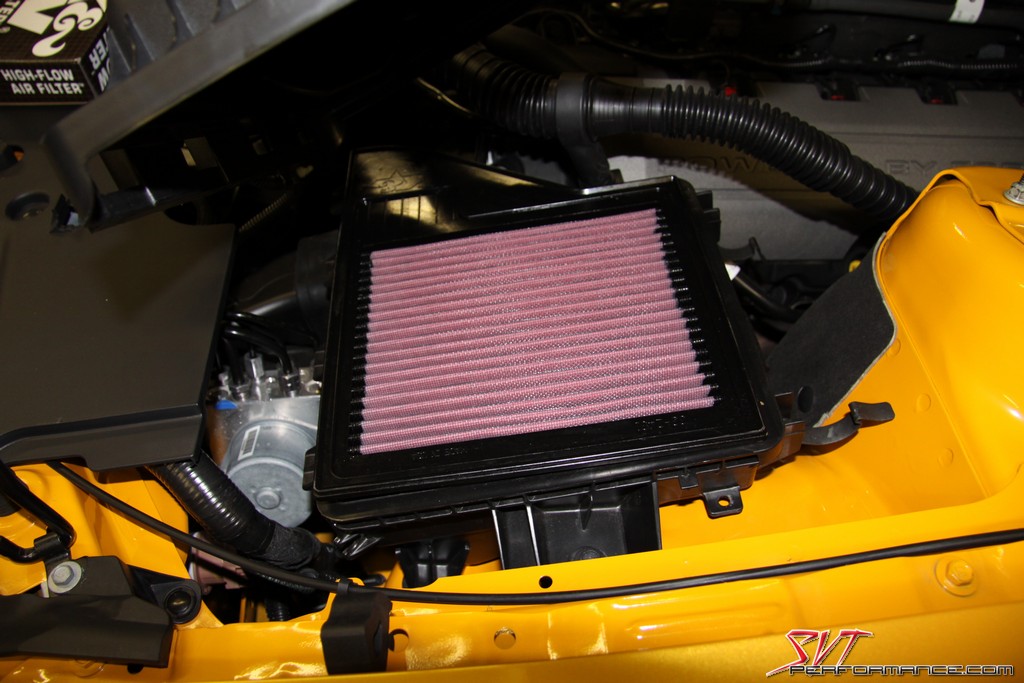
This is our best run with the stock filter, 381.8HP 372.2TQ.
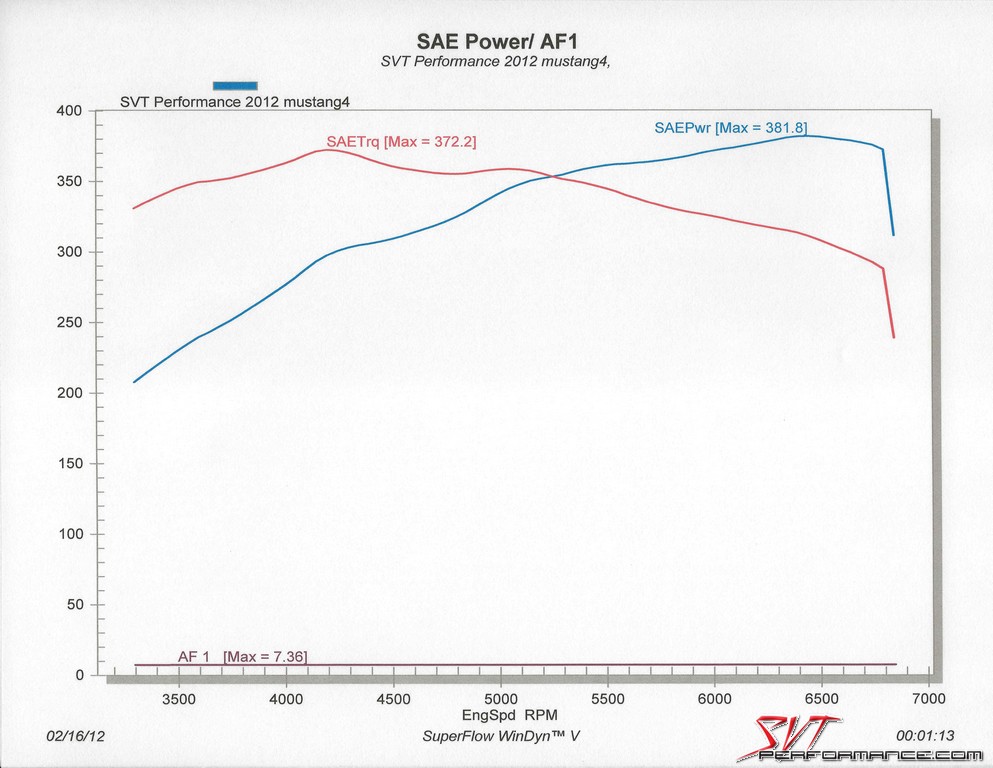
This is our best run with the K&N filter, 377.2HP 368.5TQ.
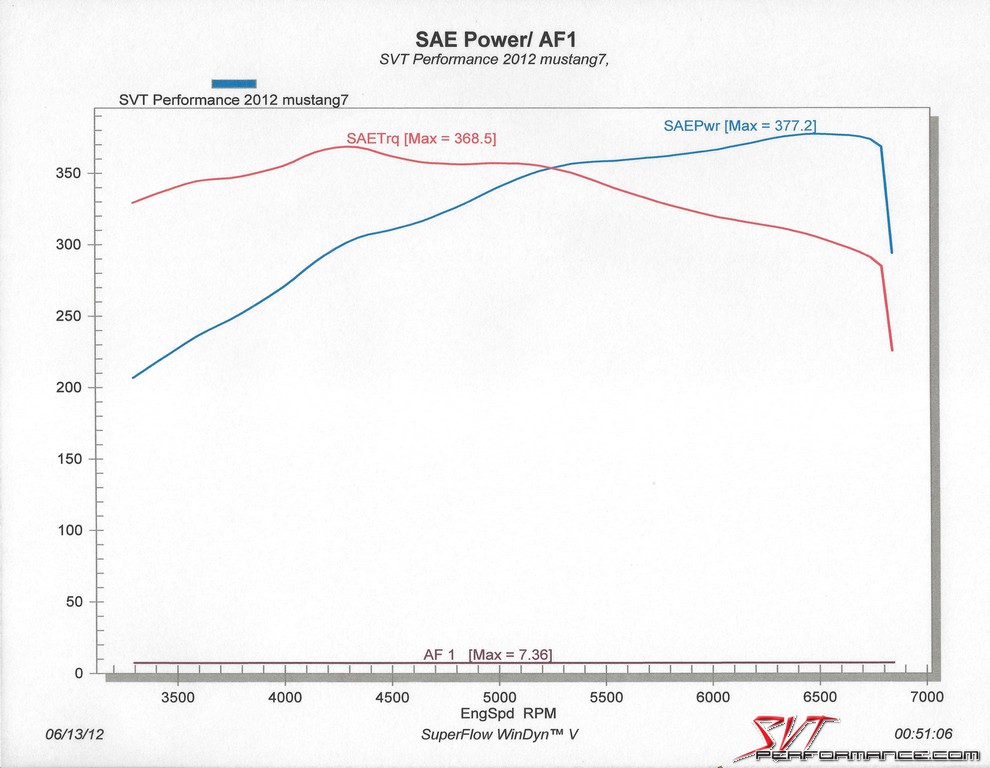
This a comparison of the best runs with both filters.
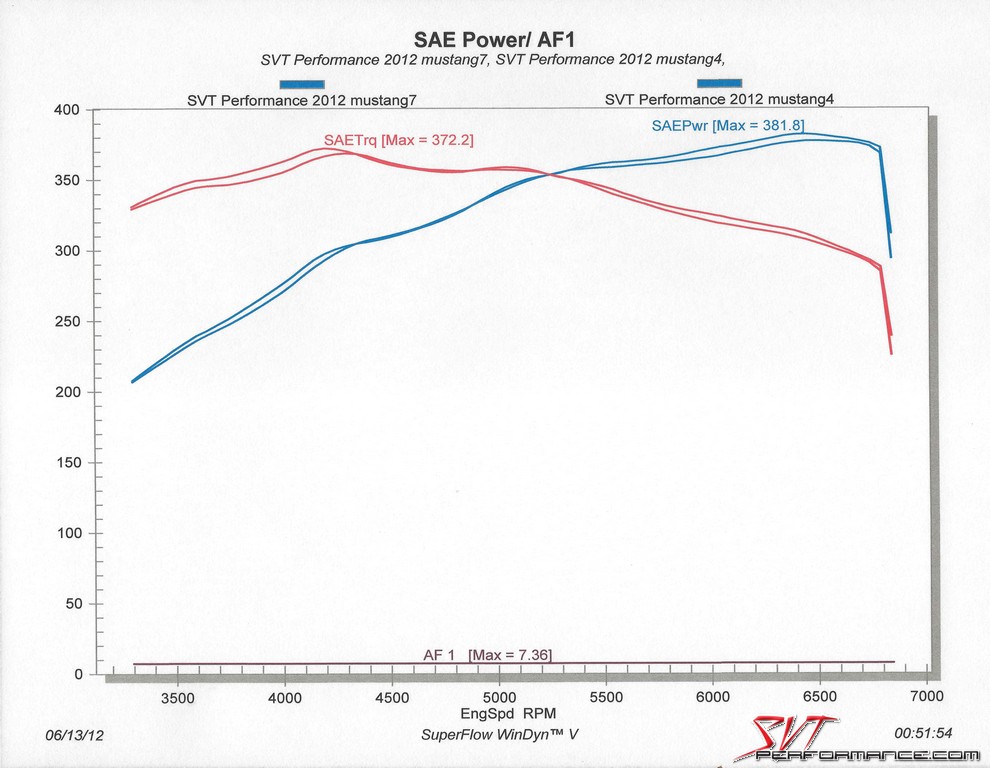

The SVTP has sadly been returned to stock, but not for long.

The subject of today's test. It appears to be endorsed by Ford Racing.

The part number for those who may be interested.

As it comes out of the box.

The heavy rubber construction of the K&N is far more robust than the stock filter's foam rubber.

The deeper pleats of the stock filter would appear to allow it to hold a greater volume of dirt before needing to be replaced/cleaned.

Here you can see the physical height difference of the two filters.

Fitment of the stock filter.

Fitment of the K&N filter.

This is our best run with the stock filter, 381.8HP 372.2TQ.

This is our best run with the K&N filter, 377.2HP 368.5TQ.

This a comparison of the best runs with both filters.

We ran a total of three back-to-back runs with each filter, with the following results:
Stock Filter
381.8HP 372.2TQ
375.1HP 371.9TQ
376.1HP 369.3TQ
K&N Filter
377.2HP 368.5TQ
373.0HP 363.7TQ
368.0HP 361.7TQ
I believe it’s safe to say that at the very least you will not see a tangible power gain with simply a drop-in filter. However, that’s not really the purpose of that type of filter. It is intended help save you money by being washable and reusable instead of disposable like the stock filter. Whether you’ll own your vehicle long enough recoup the initial investment is a question of usage. If you rack up a lot of miles or drive in dusty conditions a drop-in K&N filter may be worth it for you, but not if you’re looking for more power.
Special Thanks To:
Arrington Performance and ShopSupercharger.com
StacyStangz Photography
- SID297 - :beer:


